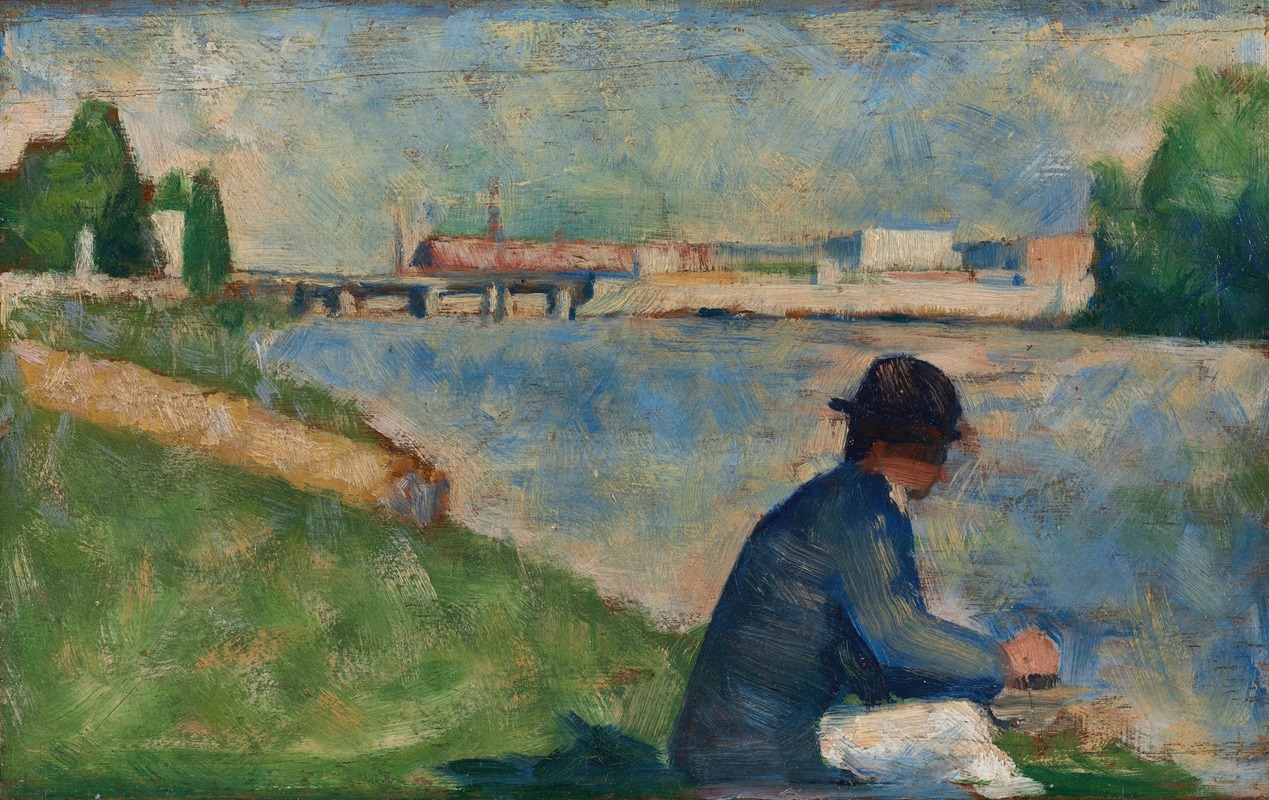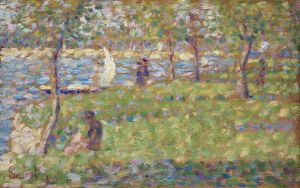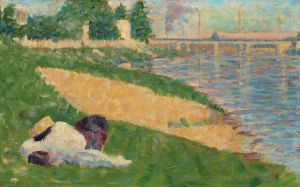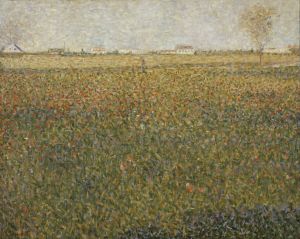
Study for ‘Bathers at Asnières’
A hand-painted replica of Georges Seurat’s masterpiece Study for ‘Bathers at Asnières’, meticulously crafted by professional artists to capture the true essence of the original. Each piece is created with museum-quality canvas and rare mineral pigments, carefully painted by experienced artists with delicate brushstrokes and rich, layered colors to perfectly recreate the texture of the original artwork. Unlike machine-printed reproductions, this hand-painted version brings the painting to life, infused with the artist’s emotions and skill in every stroke. Whether for personal collection or home decoration, it instantly elevates the artistic atmosphere of any space.
Georges Seurat, a pioneering French post-Impressionist artist, is renowned for his innovative use of color and technique, particularly through pointillism. One of his notable works is "Study for ‘Bathers at Asnières’," which serves as a preparatory piece for his larger masterpiece "Bathers at Asnières." This study provides insight into Seurat's meticulous approach to composition and his exploration of light and color.
"Study for ‘Bathers at Asnières’" was created in the early 1880s, a period when Seurat was deeply engaged in developing his distinctive style. The study is executed in oil on canvas and reflects Seurat's interest in capturing the leisurely activities of Parisians along the Seine River. Asnières, a suburb of Paris, was a popular spot for relaxation and recreation, making it an ideal subject for Seurat's exploration of modern life.
The study depicts a group of bathers lounging by the riverbank, with the industrial backdrop of factories and bridges in the distance. This juxtaposition of leisure and industry is a recurring theme in Seurat's work, highlighting the changing landscape of Paris during the late 19th century. The figures in the study are rendered with a sense of stillness and formality, characteristic of Seurat's approach to composition.
Seurat's technique in this study is noteworthy for its use of small, distinct brushstrokes that would later evolve into his signature pointillist style. Although the study does not fully employ pointillism, it demonstrates Seurat's interest in the optical effects of color and light. He carefully considered the interplay of colors, using contrasting hues to create a sense of depth and luminosity.
The study also reveals Seurat's attention to detail and structure. He employed a grid system to meticulously plan the composition, ensuring balance and harmony in the arrangement of figures and landscape elements. This methodical approach is evident in the precise placement of each element within the scene.
"Study for ‘Bathers at Asnières’" is significant not only as a preparatory work but also as an example of Seurat's artistic evolution. It reflects his transition from traditional Impressionism to a more structured and scientific approach to painting. This study laid the groundwork for the final version of "Bathers at Asnières," which Seurat completed in 1884 and is now housed in the National Gallery in London.
The study itself is part of the collection at the Musée d'Orsay in Paris, where it is appreciated for its historical and artistic value. It offers viewers a glimpse into Seurat's creative process and his dedication to capturing the essence of contemporary life through innovative techniques.
In summary, "Study for ‘Bathers at Asnières’" by Georges Seurat is a vital piece that illustrates the artist's early experimentation with color and composition. It serves as a testament to Seurat's influence on the art world and his role in the development of modern painting techniques.


















